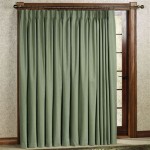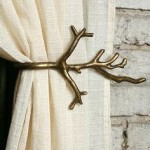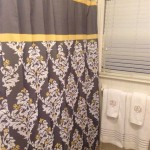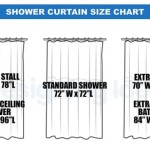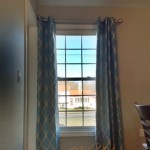Outdoor Curtain Weights for Wind: Maintaining Elegance and Functionality
Outdoor curtains can dramatically enhance the aesthetic appeal and usability of patios, porches, gazebos, and decks. They provide shade, privacy, and a barrier against insects. However, one of the most significant challenges with outdoor curtains is their susceptibility to wind. Uncontrolled billowing and flapping can be not only unsightly and disruptive but can also damage the curtains themselves, as well as potentially pose a safety hazard.
Fortunately, various solutions exist to mitigate the effects of wind on outdoor curtains. Among the most effective and widely employed are outdoor curtain weights. These weights, attached to the bottom of the curtains, add mass that counteracts the force of the wind, keeping the curtains hanging straight and preventing excessive movement. This article will explore the different types of outdoor curtain weights, their benefits, selection criteria, and installation methods.
Understanding the Need for Curtain Weights
The necessity of curtain weights for outdoor applications becomes apparent when considering the specific challenges posed by outdoor environments. Unlike indoor curtains, which are typically sheltered from the elements, outdoor curtains are constantly exposed to wind, rain, and sunlight. Wind, in particular, can exert significant force on the fabric, causing it to billow outwards and potentially tear or rip. This movement can also create noise and disrupt conversations or relaxation. Moreover, if the curtains are used for privacy, uncontrolled billowing compromises this function.
Curtain weights address these issues by providing a direct counterforce against the wind. By adding weight to the bottom edge of the curtains, they resist the upward and outward pull of the wind, helping the curtains to remain in place. This not only improves the appearance of the curtains but also extends their lifespan by reducing stress on the fabric and seams. Furthermore, in areas prone to sudden gusts of wind, weights can prevent the curtains from becoming projectiles, enhancing safety.
The effectiveness of curtain weights depends on several factors, including the weight of the weights themselves, the size and weight of the curtains, and the typical wind conditions in the area. In areas with frequent high winds, heavier weights or a greater number of weights may be required to adequately stabilize the curtains.
Types of Outdoor Curtain Weights
The market offers a diverse range of outdoor curtain weights, each with its own advantages and disadvantages. The choice of weight depends on the desired aesthetic, the type of curtain fabric, and the level of wind resistance required.
Discrete Weights: These are small, often metal or resin weights that can be sewn directly into the hem of the curtain. They are virtually invisible and do not alter the appearance of the curtain. Discrete weights are ideal for lighter fabrics and situations where maintaining a minimalist aesthetic is paramount. They are generally less effective in high-wind conditions compared to heavier options.
Clip-On Weights: These weights attach to the bottom of the curtain using clips or clamps. They are easy to install and remove, making them a convenient option for curtains that are frequently washed or adjusted. Clip-on weights come in various shapes and sizes, often made of metal or plastic. While convenient, they may be more noticeable than sewn-in weights and can potentially damage delicate fabrics if the clips are too tight.
Chain Weights: Chain weights consist of a continuous chain that is sewn into the hem of the curtain. This provides uniform weight distribution and helps the curtain hang evenly. Chain weights are particularly effective for heavier fabrics and provide excellent wind resistance. They are often made of rust-resistant materials like stainless steel or brass. The main drawback is that installing a chain weight requires more sewing effort than other options.
Grommet Weights: These weights are designed to be attached to grommets that are installed along the bottom edge of the curtain. They are often made of metal and feature a hook or loop that allows them to be easily attached and detached. Grommet weights provide a secure and adjustable solution for controlling curtain movement. They are also aesthetically pleasing, adding a decorative element to the bottom of the curtains.
Magnetic Weights: Magnetic weights utilize magnets to adhere to the curtain fabric. This is a non-invasive method that does not require sewing or clipping. Magnetic weights are particularly suitable for lightweight fabrics and temporary installations. Their holding power is limited, however, and they may not be effective in strong winds. It is important to ensure the magnets used are rust-proof to prevent staining of the fabric.
Factors to Consider When Selecting Curtain Weights
Choosing the right outdoor curtain weights involves careful consideration of several factors. The objective is to select weights that provide adequate wind resistance without compromising the appearance or functionality of the curtains.
Weight and Quantity: The heavier the curtain fabric and the stronger the typical winds, the heavier and more numerous the weights need to be. A general rule of thumb is to start with lighter weights and gradually increase the weight until the desired level of stability is achieved. Distribute the weights evenly along the bottom edge of the curtain for optimal performance. For very large curtains, consider using weights at regular intervals along both the side and bottom hems.
Material: Outdoor curtain weights should be made of durable and weather-resistant materials. Stainless steel, brass, and coated metals are excellent choices as they resist rust and corrosion. Plastic weights are also an option, but they may not be as durable or aesthetically pleasing as metal weights. Ensure that any coatings or finishes are designed for outdoor use to prevent fading or peeling.
Attachment Method: The method of attachment should be appropriate for the type of curtain fabric and the desired level of permanence. Sewn-in weights are the most discreet but require more effort to install. Clip-on weights are convenient but may be more visible and potentially damaging. Grommet weights offer a secure and adjustable solution, while magnetic weights are best suited for temporary installations.
Aesthetic Compatibility: The appearance of the curtain weights should complement the style of the curtains and the overall outdoor decor. Choose weights that are either discreetly hidden or that add a decorative element to the curtains. Consider the color and finish of the weights and how they will blend with the fabric and surrounding environment.
Safety: If there are children or pets in the area, safety is a paramount concern. Ensure that the weights are securely attached to the curtains and that they do not pose a choking hazard or a tripping hazard. Avoid using weights with sharp edges or corners that could cause injury. Periodically inspect the weights and attachment points to ensure they are in good condition and properly secured.
Installation and Maintenance of Curtain Weights
Proper installation is crucial for ensuring that outdoor curtain weights perform effectively and safely. The installation method varies depending on the type of weight being used. Sewn-in weights should be carefully stitched into the hem of the curtain, ensuring that the stitches are strong and secure. Clip-on weights should be attached evenly along the bottom edge of the curtain, making sure that the clips are not too tight and do not damage the fabric. Grommet weights should be attached to grommets that are securely fastened to the curtain.
Once the curtain weights are installed, regular maintenance is essential to ensure their longevity and effectiveness. Periodically inspect the weights and attachment points for signs of wear and tear. Clean the weights regularly to remove dirt, dust, and debris. If the weights are made of metal, apply a protective coating to prevent rust and corrosion. If the attachment points become loose or damaged, repair or replace them promptly.
For sewn-in weights, it may be necessary to occasionally re-stitch the hem to ensure that the weights remain securely attached. For clip-on weights, check the clips regularly to ensure that they are not loose or damaged. For grommet weights, inspect the grommets to ensure that they are securely fastened to the curtain and that they are not showing signs of rust or corrosion.
In addition to maintaining the curtain weights themselves, it is also important to maintain the curtains. Wash the curtains regularly to remove dirt and debris, and repair any tears or holes promptly. Store the curtains properly during the off-season to protect them from the elements and extend their lifespan.
By carefully selecting and properly installing outdoor curtain weights, and by performing regular maintenance, it is possible to effectively mitigate the effects of wind and ensure that outdoor curtains remain both aesthetically pleasing and functional for years to come. This contributes to a more comfortable and enjoyable outdoor living space.

Outdoor Curtain Weights Windproof Heavy Duty Indoor Tablecloth Clips Natural Stone Wal Com

36pcs Outdoor Curtain Weights Plastic Wrapped Magnetic Drapery Waterproof Heavy Duty Magnets For Wind Outside Shower

18 Pcs Outdoor Curtain Weights Magnetic Shower Waterproof Drapery Heavy Weighted Magnets Bottom For

How To Keep Outdoor Curtains From Blowing In Wind A Nest With Yard

Deevoka Outdoor Curtain Weights Drapery For Heavy Wind Shower Gazebo Black

New 4 8 12 Sets Of Outdoor Curtain Windproof Weights Decorative Bags And Clips Weight Bag

How To Keep Outdoor Curtains From Blowing In Wind A Nest With Yard

18 Pcs Outdoor Curtain Weights Magnetic Shower Waterproof Drapery Heavy Weighted Magnets Bottom For

Outdoor Curtains For Patio Waterproof Shimeyao 18 Pack 3 6 Oz Heavy Duty Cutain Weights Outdoo

How To Keep Outdoor Curtains From Blowing In The Wind Proline Range Hoods
See Also

